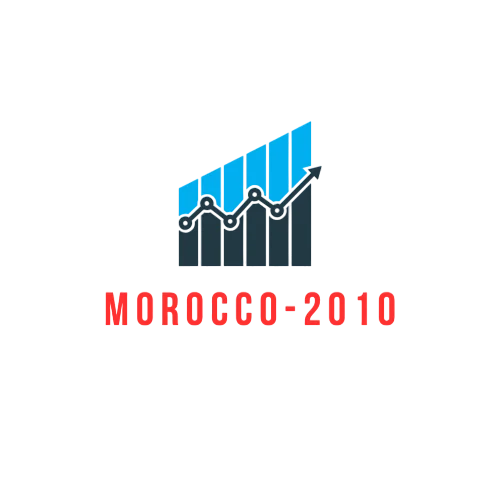Every time you buy a coffee or fill up your gas tank, you’re participating in an economic system, whether you realize it or not. But what exactly are these systems that govern how resources are allocated and goods are produced? Buckle up because we’re diving into the fascinating world of economics!
Table of Contents
ToggleOverview of Economic Systems
Economic systems define how a society manages its resources and distributes goods. There are four primary types: traditional, command, market, and mixed systems. Each system represents a unique approach to addressing the fundamental economic questions of production and distribution.
Traditional economies rely on customs and traditions. These systems often depend on agriculture and bartering. Farming communities use inherited practices for growing crops and raising livestock. They emphasize sustainability and preserving cultural values.
Command economies centralize control of production and distribution within the government. In these systems, authorities determine what to produce and set prices. State-run enterprises deliver most goods and services. Historical examples include the former Soviet Union and modern-day North Korea.
Market economies operate on supply and demand principles. Individuals and businesses drive production decisions based on consumer preferences. Prices fluctuate based on competitive markets. The United States and Canada exemplify market systems, where private ownership fuels innovation and growth.
Mixed economies combine elements of command and market systems. In these systems, governments intervene in markets to promote social welfare and regulate industries. Many countries, including those in Western Europe, exemplify mixed models that blend free-market efficiency with government safeguards.
Understanding these economic systems provides insight into different societal structures and the choices they make regarding resource allocation and production methods. Each system’s unique characteristics shape its economy and ultimately impact its citizens.
The Four Economic Systems
Each economic system plays a distinct role in resource allocation and production methods. Understanding these systems sheds light on the different approaches societies adopt to manage their economies.
Traditional Economic System
Traditional economic systems primarily depend on customs and traditions. These systems focus on agriculture and subsistence farming. Communities often follow methods passed down through generations. Bartering serves as a common practice instead of using currency. Sustainability and cultural values heavily influence these economies, ensuring that resources are used wisely and responsibly. Examples include rural communities in Africa and indigenous tribes in the Americas, where practices are closely tied to the land and social structures.
Command Economic System
Command economic systems place control firmly in the hands of the government. The state makes decisions regarding production, pricing, and distribution of goods and services. Central planning governs economic activity, as seen in historical contexts like the Soviet Union. In this system, individual choices are limited as the government sets priorities based on its goals. Though this can lead to uniformity, it often struggles with efficiency and innovation due to the absence of market signals.
Market Economic System
Market economic systems emphasize supply and demand as the primary drivers of production. Individual decision-making among consumers and businesses shapes the marketplace. Competition thrives, encouraging innovation and efficiency, evident in economies like the United States and Canada. Pricing emerges organically based on what people are willing to pay. With minimal government intervention, these systems adapt quickly to changing consumer preferences, allowing for responsive economic growth and resource allocation.
Mixed Economic System
Mixed economic systems incorporate elements from both command and market structures. Governments intervene to manage certain sectors while allowing for private enterprise. This balance aims to address social welfare, ensuring equitable access to resources. Countries such as Sweden and France exemplify this approach, where healthcare and education are commonly provided by the state. This system seeks to combine the efficiency of market economies with the social safety nets typical of command economies, creating a diverse and adaptable environment.
Comparison of Economic Systems
Economic systems exhibit unique characteristics that influence resource distribution and production methods. Understanding the strengths and weaknesses allows for a better grasp of their impact on societies.
Strengths and Weaknesses
Each economic system carries distinct strengths and weaknesses. Traditional economies often enjoy sustainability and cultural continuity, yet they may struggle with limited innovation. Command economies can achieve rapid industrialization, but government control often limits individual choice and can lead to inefficiencies. Market economies excel in promoting competition and innovation, forming a responsive marketplace that frequently meets consumer needs. On the downside, income inequality and market failures can emerge. Mixed economies balance these strengths by incorporating safeguards for social welfare, although they may confront challenges like bureaucratic inefficiency.
Real-World Examples
Various countries exemplify the four economic systems. Traditional economies exist in places like rural Kenya, where subsistence farming and bartering remain prevalent. North Korea serves as a prominent example of a command economy, with the government controlling essentially all aspects of production. The United States showcases a strong market economy, characterized by entrepreneurship and consumer-driven growth. Lastly, Sweden illustrates a mixed economy, blending free enterprise with extensive social welfare provisions, such as universal healthcare and education. These examples highlight how different systems influence societal functioning and resource management.
Understanding the four economic systems provides valuable insights into how societies function and manage resources. Each system presents unique characteristics that influence everything from individual choices to broader economic outcomes. Traditional economies prioritize cultural values and sustainability while command economies focus on centralized control. Market economies thrive on competition and innovation, whereas mixed economies strive to balance efficiency with social welfare. Recognizing these differences helps individuals navigate the complexities of global economies and appreciate the diverse approaches to resource allocation and production.





